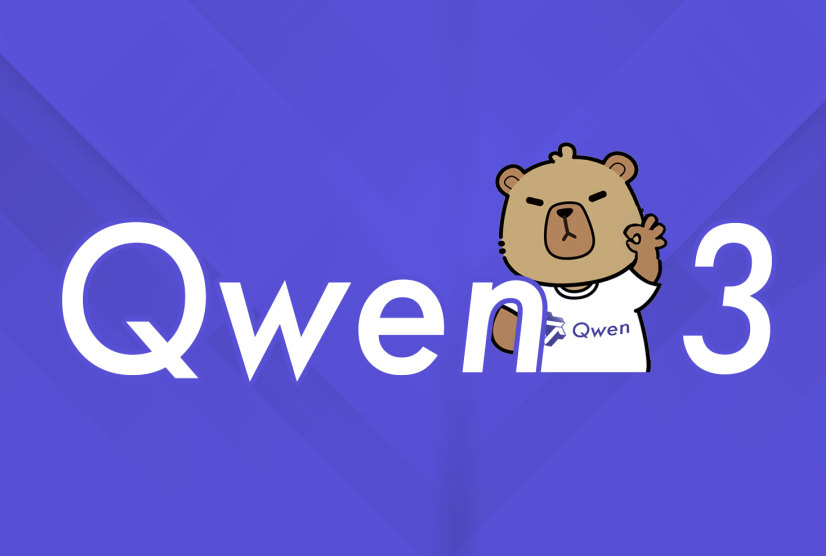Chinese technology giant Alibaba Group Holding Ltd. has announced Qwen3, a new family of artificial intelligence models that it says can outperform competing models from companies such as OpenAI and Google LLC.
The new release underscores the rapid pace of development within China’s AI industry since DeepSeek Ltd. first burst onto the scene late last year.
The e-commerce giant said the new Qwen3 models surpass the capabilities of DeepSeek’s best models in a number of areas, including coding and math-based problems. It’s releasing a number of models within the Qwen3 family under an open-source license, ranging in size from 600 million to 235 billion parameters, which is a measure that roughly corresponds to problem-solving abilities. As a rule, the more parameters a model has, the better it performs.
Within the new Qwen3 series are two “mixture of experts” or MoE models that Alibaba says are able to compete with the most advanced reasoning models launched by Google and Anthropic PBC. Reasoning models are designed to mimic the way humans think about problems, taking more time to consider things and perform fact checking for accuracy.
By using the MoE technique, AI models can enhance their reasoning skills by dividing a task into smaller segments, similar to how a company might employ teams of specialists to focus on specific parts of a more challenging problem. By splitting the tasks across different parts of the model, the problem solving process becomes more efficient.
“We have seamlessly integrated thinking and non-thinking modes, offering users the flexibility to control the thinking budget,” Alibaba’s Qwen team said in a blog post. “This design enables users to configure task-specific budgets with greater ease.”
Alibaba said the Qwen3 models support 119 languages and have been trained on a dataset containing almost 36 trillion tokens, which are the raw bits of data they process while being “taught.” One million tokens is equivalent to around 750,000 words, and in this case the data was drawn from various textbooks, code snippets, AI-generated data, question-answer pairs and other sources.
In various benchmark tests, Alibaba’s Qwen3 models delivered some impressive results, edging out recent “high-end” models from U.S.-based AI companies, such as OpenAI’s o3-mini and o4-mini models.
For instance, on the Codeforces benchmark that measures models’ ability to write code, the largest Qwen-3-235B-A22B model surpassed o3-mini and Google’s Gemini 2.5 Pro. It also beat 03-mini on the AIME mathematics benchmark, as well as the BFCL test that assesses AI models’ reasoning abilities.
Since DeepSeek’s R1 reasoning model first burst onto the scene at the end of December, upstaging OpenAI despite being developed at just a fraction of the cost, Chinese tech leaders have released a flurry of similarly powerful AI models. Alibaba launched the Qwen-2.5 series models just a few weeks earlier, noting they can process multimodal data formats including text, images, audio and video. Those models are notably lightweight, designed to run directly on smartphones and laptops.
The emergence of powerful, open-source Chinese AI models has upped the ante for U.S. AI companies, which were until recently seen as industry leaders. But their status is coming under threat, especially because American-made models are generally trained at much higher costs than their Chinese counterparts.
The U.S. government has also responded, introducing further sanctions that aim to prevent Chinese companies from getting their hands on the powerful graphics processing units used to train and run AI models. In its most recent move, the U.S. slapped an export license on Nvidia Corp.’s H20 GPU, which had been designed specifically to comply with earlier sanctions on China.
OpenAI has responded by saying it will release an “open-weights” reasoning model in the next few months, marking a dramatic reversal from its usual approach, where the inner workings of its models are essentially a “black box.”
Alibaba Chief Executive Officer Eddie Wu said in February that the company’s main objective is to build an “artificial general intelligence” system that will ultimately surpass the intellectual capabilities of humans.
Image: Alibaba
Your vote of support is important to us and it helps us keep the content FREE.
One click below supports our mission to provide free, deep, and relevant content.
Join our community on YouTube
Join the community that includes more than 15,000 #CubeAlumni experts, including Amazon.com CEO Andy Jassy, Dell Technologies founder and CEO Michael Dell, Intel CEO Pat Gelsinger, and many more luminaries and experts.
THANK YOU










